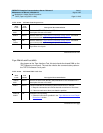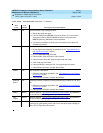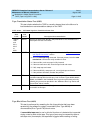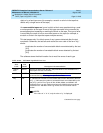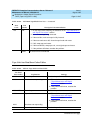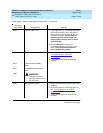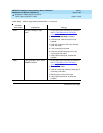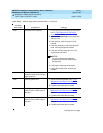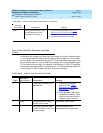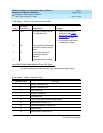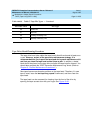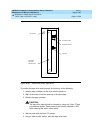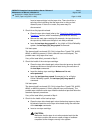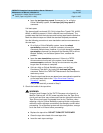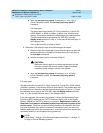
DEFINITY Enterprise Communications Server Release 6
Maintenance for R6vs/si
555-230-127
Issue 1
August 1997
Maintenance Object Repair Procedures
Page 10-1251TAPE (Tape Unit) [G3iV1.1-286]
10
How to Use Table B to Determine Aux Data
Values
In this table, the numbers can have one to five digits. If the first or leftmost digit is
"1," the number has five digits. If the first digit or leftmost digit is "2," the number
has four digits. If the first or leftmost digit is "3," the number has three digits. If the
first or leftmost digit is "4," the number has two digits. If the first or leftmost digit is
"5," the number has one digit. For example, if the number is "2300," "2" indicates
that the tape cartridge should be replaced soon. "3" indicates that the Tape Drive
could not read or write at least one block of data from the tape.
9034 Inability to both read and write
a significant portion of the
scratch area on the tape.
1. Follow the steps provided in the ‘‘Tape
Maintenance and Repair Procedures’’
section.
2. If problem still exists then escalate.
Table 10-434. Table B. Tape Unit Aux Data Table
Digit
Aux Data/
Error Code (a) Explanation Strategy
0 0 Exact cause of error is not
determined.
1. Follow the instructions
provided in the ‘‘
Tape
Maintenance and Repair
Procedures’’ section.
2. If the tape alarm still exists,
escalate the problem. If this
is the only error and there is
no alarm, ignore this error.
1 1xxxx If the aux data is "10000,"
the error is non-fatal.
Ignore the "10000" case.
Each of the last four digits
of the Aux Data "1xxxx" is a
non-zero value.
Follow the steps in the
appropriate aux data section.
Table 10-433. Table A: Tape Unit Aux Data Table — Continued
Aux Data/
Error Codes Explanation Strategy
Continued on next page



